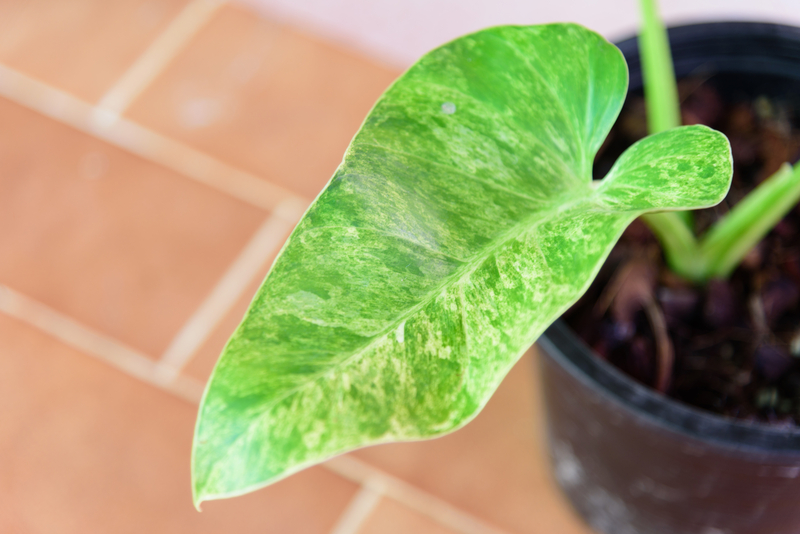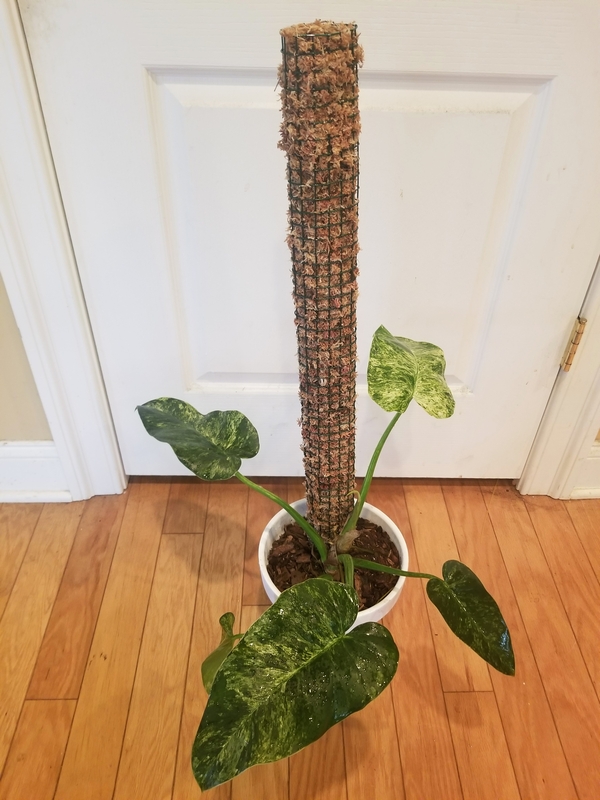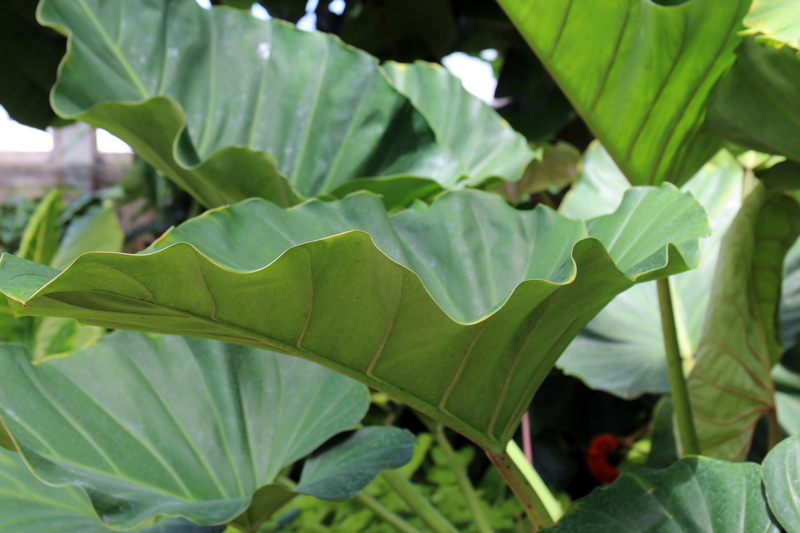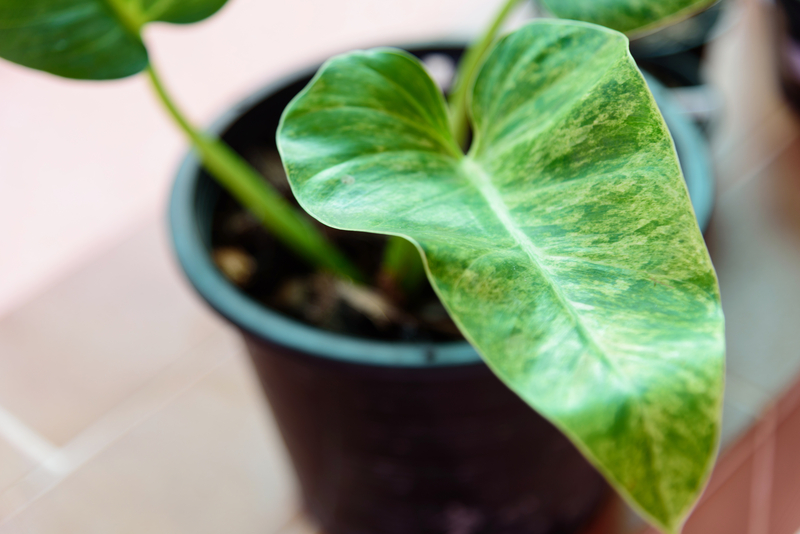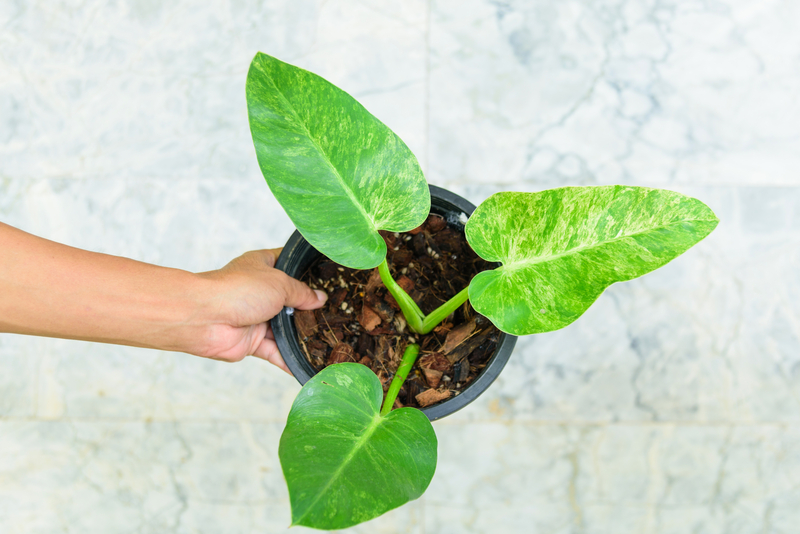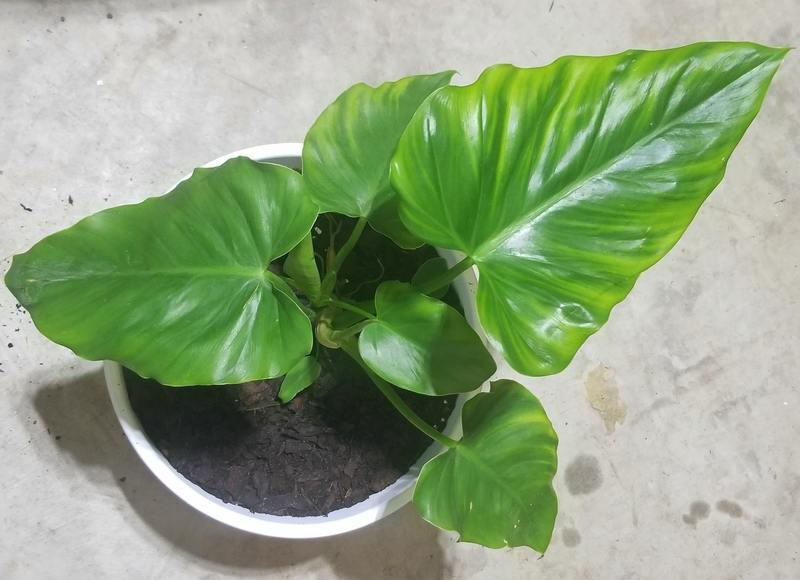If you are looking for a large indoor tropical plant, consider checking out the Philodendron Giganteum. This plant sports big green leaves, which help bring a burst of color into any room. Not only is the plant nice-looking, but it is relatively easy to care for, even for beginners. Here are the care guide tips to keep your Philodendron Giganteum healthy and happy!
Common Names
- Giant Philodendron
- Philodendron Giganteum Elephant Ear Plant
What Soil Works Best for a Philodendron Giganteum?
Airy and light soil that drains well works best for this plant. Since the aerial roots of the plant like to grab onto things, you can add pebbles, perlite, orchid bark, sand, sterile compost, brick bits, coconut husk, mulch, and other organic matter to the mix to give the soil a bit more texture.
Since this climber plant wants its aerial roots to latch onto something, you should place a sphagnum peat moss pole in the middle of the soil. If you don’t have this pole in the ground, the large plant will topple over since it is so big.
Can You use a Houseplant Fertilizer?
The best time to use organic fertilizer on this plant is during the growing season. Organic fertilizer is the best option since it contains ingredients similar to the plant’s soil already. However, you can use a well-balanced liquid fertilizer with this plant, but give the plant half the recommendation on the back of the bottle when you start to ease it into this boost of nutrients.
How Much Sunlight Does a Philodendron Giganteum Need?
A Philodendron Giganteum does best with bright indirect light. Since this is a tropical plant, it is familiar with growing in partial shade, so you want to mimic that in your home or office. You want to keep the rich green leaf look on this plant, so if they start looking dull, you can move them to an area that gets more indirect sunlight.
Be careful about giving this plant too much direct sunlight. Too much direct sunlight can scorch the green leaves on the plant. If you leave this plant in front of a west-facing window, consider placing a curtain or blinds over it to create more indirect light.
What Temperature Works Best for a Philodendron Giganteum?
The best temperature range for a Giant Philodendron is between 60-85 degrees Fahrenheit, average room temperature. This tropical plant can withstand temperatures getting down to 50 degrees, but anything less than that will cause growth issues. If you leave this plant outdoors, make sure you bring it into your home or office before frost develops on the ground.
As an indoor plant, be mindful about keeping this plant near a cold window or AC unit. Being near a cold window or AC unit can cause this plant to wilt if it does not return to warmer climates.
What Humidity Requirements Does a Philodendron Giganteum Need?
Like most philodendron varieties, these tropical plants love high humidity levels. Consider placing this plant in a bathroom with a shower if you have the space. Running a shower will create the right amount of humidity that this plant enjoys.
If you can’t place this plant into a bathroom, consider investing in a humidifier to place next to it. A humidifier is a good option if you live in a dry home and want to increase the humidity around the plant. However, while the humidifier is an excellent investment, don’t leave it running too long next to the plant because that can increase the risk of root rot.
Finally, you can regularly mist the plant and bunch it together around other similar plants. When you mist a gaggle of plants, they all create more humidity in their area, which helps all plants enjoy humid environments.
How Often Should You Water a Philodendron Giganteum?
When the weather is warm during the growing season, you can water the plant when the top two inches of soil are dry. Typically, you will be watering this plant once a week, especially if you leave the plant in an area that receives more sun than indirect light. You can scale back the watering to once every other week during the winter months since it will take longer for the soil to absorb the water.
Root rot is a common problem with this plant from overwatering it. You should only water the plant when the top two inches of soil are dry to reduce root rot. In addition to that, make sure the plant is in a container with drainage holes to allow water to flow through it.
Finally, underwatering is an issue with this plant, especially during the growing season. If you notice that the rich green leaves look droopy, that is a sign of underwatering. Consider increasing your watering cycle to give this plant more water to help resolve this issue.
What Size Does a Philodendron Giganteum get to Typically?
Keeping a Philodendron Giganteum as an indoor plant will hover around 3-4 feet tall in mature height. However, this plant will get close to 15 feet tall out in the rainforests due to its vining nature.
Most Common Bugs
While rare, mealybugs, spider mites, and aphids can be common pests on this plant if you don’t give proper Philodendron Giganteum care. If you notice these bugs on the plant, you can gently wipe them down with a clean cloth and rubbing alcohol. You can also put some insecticidal soap with water in a spray bottle and shower down the plant to remove the webs on the leaves if they are present.
Most Common Diseases
Fungus on the leaves is a common problem for this plant. Leaving water on the leaves and not drying them off while leaving the plant in poor light conditions can build fungus. Not only will there be brown spots on the leaves, but some of the leaves will become brittle and fall off the plant entirely.
To fix this fungus problem, you want to isolate the plant from other healthy plants. Next, use a fungicide to spray down the infected leaves. After that, dry the leaves with a clean cloth and place the plant in an area with more indirect sunlight.
Root rot is another problem with this plant. If the plant has root rot, you will need to remove the plant entirely from the pot and cut away dead roots. After that, you can place the plant into fresh soil and put it in an area that receives more light than the previous area in your home or office.
Can You Prune a Philodendron Giganteum?
It is best to prune away any yellow leaves on the plant. You help preserve the rest of the plant’s energy to the remaining healthy parts by pruning away these yellow leaves. It is better to cut out one or two leaves right above the node so the plant can create new leaves in its place.
You can also prune this plant if it becomes too big for your current area. It is best to prune this tropical plant during the growing season since it won’t shock much.
Can You Propagate a Giant Philodendron?
You can propagate a Giant Philodendron through stem cuttings. Here are the propagation steps to take below.
- Using clean sheaths or players, cut the bottom of the mother plant right below a node
- Put some rooting hormone on the bottom of the new cutting
- Place the new cutting into fresh soil
- Leave the cutting in a low light area
- Give the plant water after a week
- After a week or two, tug at the plant to see if the roots form in the soil. If the roots are firm in the ground, the new plant is ready to grow from a successful propagation.
Can You Repot a Philodendron Giganteum?
In general, this climbing philodendron likes to be rootbound, which means it is ok with being in a pot that is a bit too small for it. However, repotting should occur if the plant is drooping off to one side, even with a moss pole in the middle of the soil. Falling off to one side indicates that this plant has no more space inside the pot to grow.
For repotting this plant, you want to place it in a container 2 inches larger in diameter than the previous home. The bigger container allows the plant to grow inside the pot since it enjoys being rootbound. However, if you place the plant in a pot much larger than 2 inches in diameter, it might struggle to fill that space, which can lead it to fall over.
Where Does this Plant Originate from Initially?
A Philodendron Giganteum originates from the rainforests in South America, specifically Brazil.
What USDA Hardiness Zone Works Best?
This tropical plant grows best in a USDA Hardiness Zone between 9-11.
Is it Toxic?
Like the rest of the plants in the Araceae Family with toxicity, a Philodendron Giganteum is toxic to ingest due to the calcium oxalate crystals. Common problems if humans or pets consume this plant include burning the mouth, lips, and tongues. In addition to that, if you or your pet eats a lot of this plant, vomiting can occur.
Conclusion: How to Take Care of a Philodendron Giganteum?
In summary, a Philodendron Giganteum is the perfect plant for anyone looking to add a big indoor tropical plant to a room. This plant does best in normal room conditions, likes high humidity, and only needs watering when the top two inches of soil mix become dry. However, if you ingest it, this plant is toxic, so keep it away from pets who like to nibble on your plants.
Similar Posts:
Scindapsus Pictus Exotica Care

